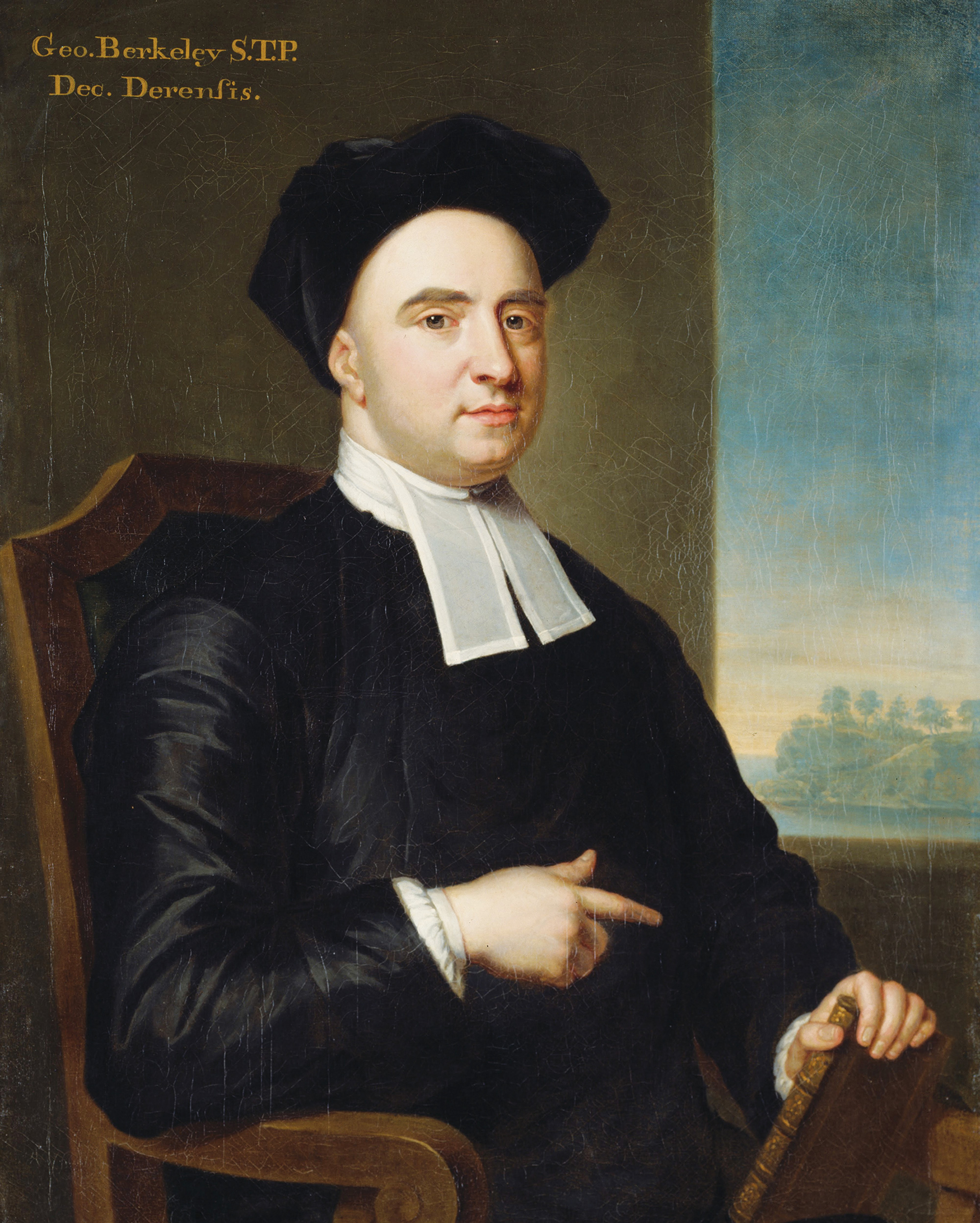George Berkeley in America
The philosopher’s New World adventure
Chris Townsend
George Berkeley, bishop of Cloyne, is best remembered today not for any of his numerous philosophical or theological writings, but rather because of one infamous “refutation” of his philosophy. In his Life of Johnson, James Boswell recalls asking the eighteenth-century lexicographer and man of letters Samuel Johnson how he would refute Berkeley’s central claim that every entity has its essence in perception. The story goes that Johnson, who is out on a walk with Boswell, angrily replies, “I refute it thus!” before simply kicking a nearby stone. The story is tiresome for being overtold, and offers little truth about either Berkeley or Johnson. For one, it is no refutation of Berkeley’s “esse is percipi” principle, given that Berkeley counts pain as a sensation or perception—kicking a rock doesn’t prove its material, mind-independent reality any more than looking at it. It’s thus also unlikely that the story represents Johnson’s true attitude toward Berkeley, given the great misunderstanding of Berkeley implicit in the so-called refutation. But the story is also frustrating for another reason, which is that, because of it, Berkeley is forever popularly associated with the wrong Samuel Johnson. For, though few people know it, Berkeley for several years enjoyed the company and correspondence of another Samuel Johnson, the American philosopher, clergyman, and resident of Connecticut. Their vigorous discussions of Berkeley’s system of idealism and of theology would have a lasting effect on his subsequent writings.

The other Samuel Johnson has been, for the most part, forgotten by readers of philosophy because we tend to remember Berkeley for the early and late periods of his life. The early phase, beginning with his appointment as lecturer at Trinity College, Dublin, and ending with his departure from that university in 1728, contributes to the first part of his legacy, as philosopher. In those years he published three great works: An Essay towards a New Theory of Vision, A Treatise Concerning the Principles of Human Knowledge (his most discussed work today), and Three Dialogues between Hylas and Philonous. These works argued for immaterialism (that there is no such thing as “matter” holding ideas together in the world) and idealism (that everything exists in and for the perceiving mind); the “esse is percipi” formula that Boswell and Johnson debated. Distinct from this philosophical phase, Berkeley’s late period—spanning the years from around 1732 until his death in 1753—was his most profoundly religious. In 1732, he published the Christian apologetic Alciphron, which was to enjoy wide success in the eighteenth century and the next, and which marked a departure from his youthful philosophical writings. And in 1734, Berkeley was enthroned as bishop of Cloyne. As a bishop, Berkeley was known to be kind and caring, a charitable man attentive to the needs of his bishopric—a humanitarian in the modern sense. Though he continued to write extensively, the writings he produced in his years as bishop tended to focus on the Church or on God. His final great work was Siris, a strange and beguiling book that attempts to connect the drinking of “tar-water”—pine tar mixed with water—with the concept of the Holy Spirit. Together, these two periods have left us our contemporary notion of the man: philosopher of idealism, bishop of Cloyne. But this leaves a blank space in the middle of his life, one that is rarely discussed in the modern literature on Berkeley. Just how did he spend the years between 1728 and 1732?